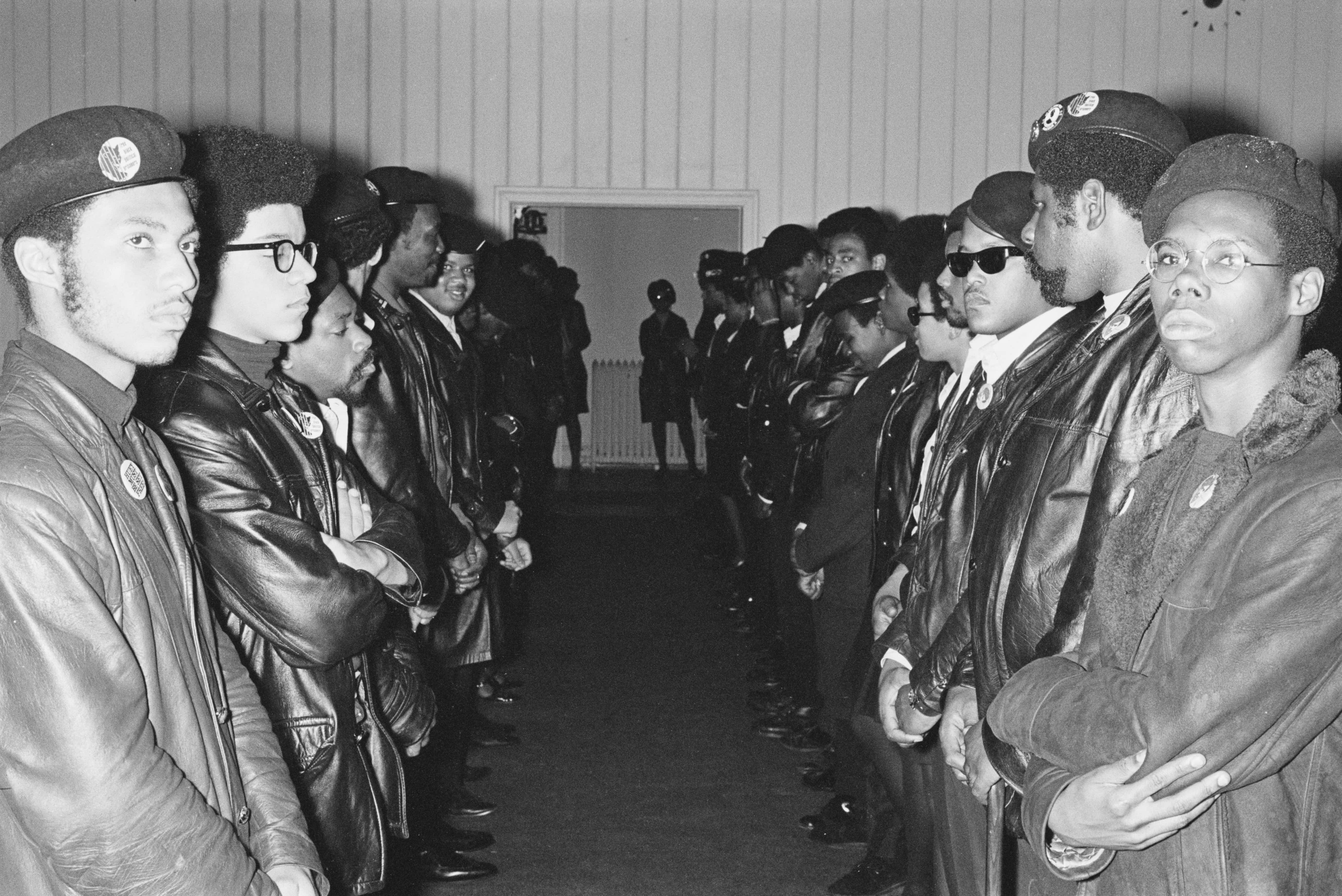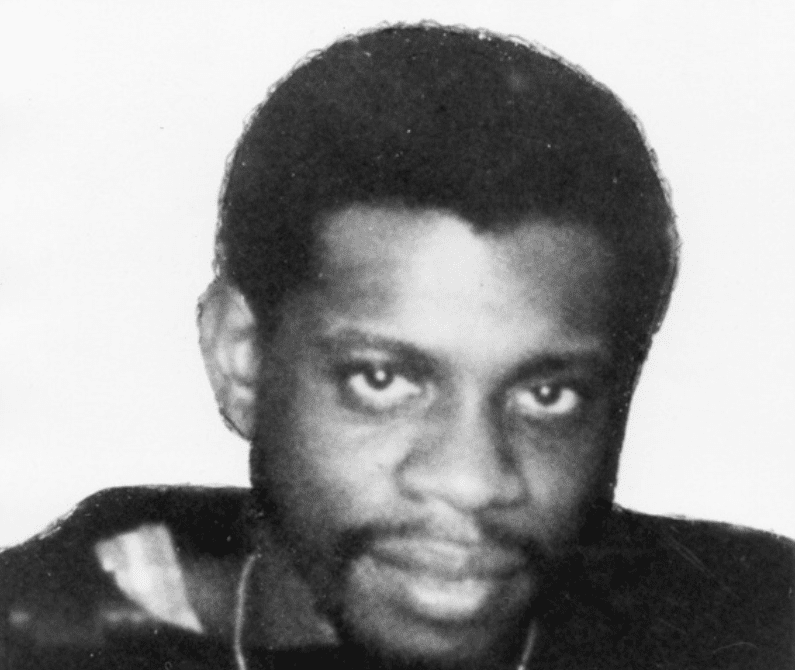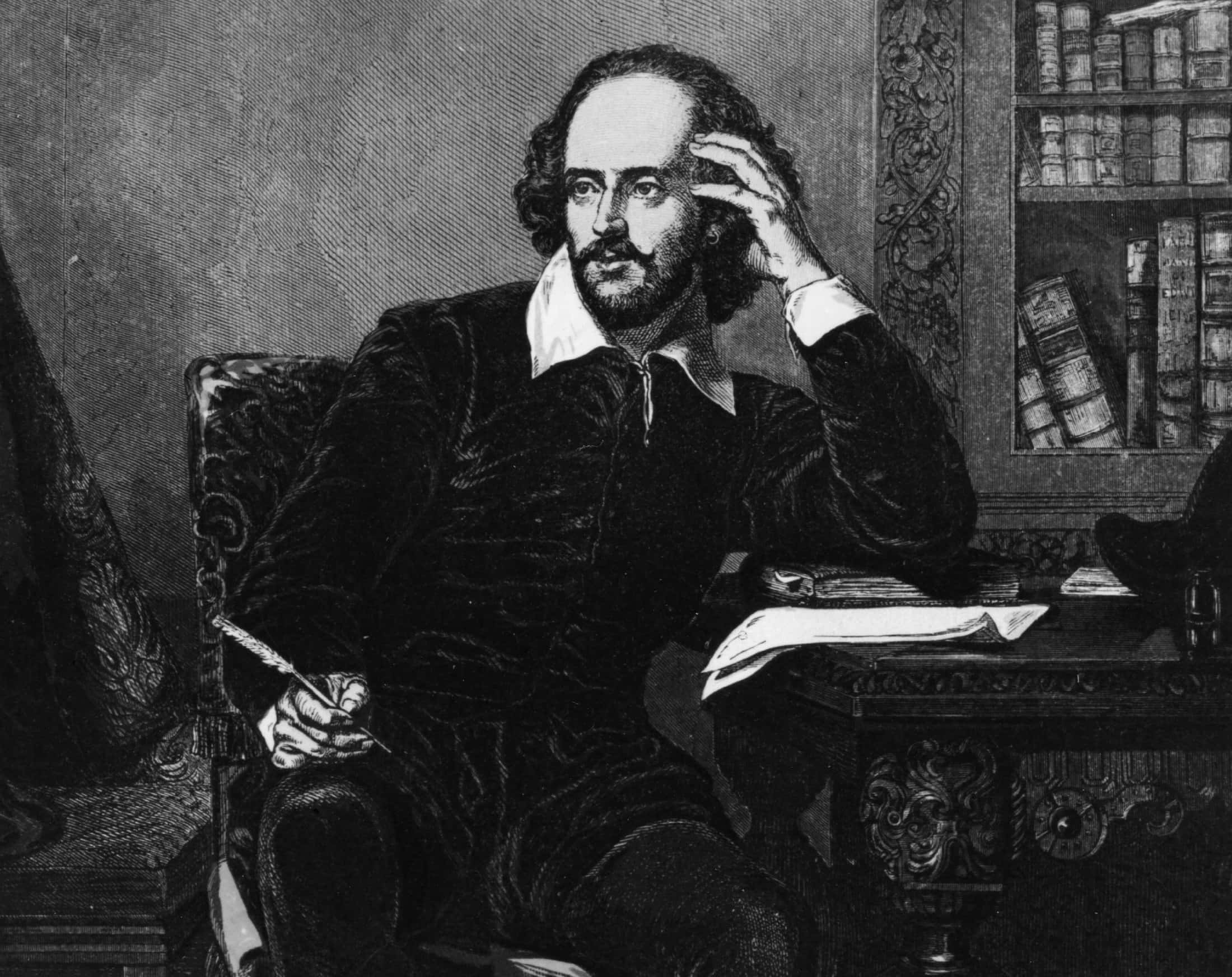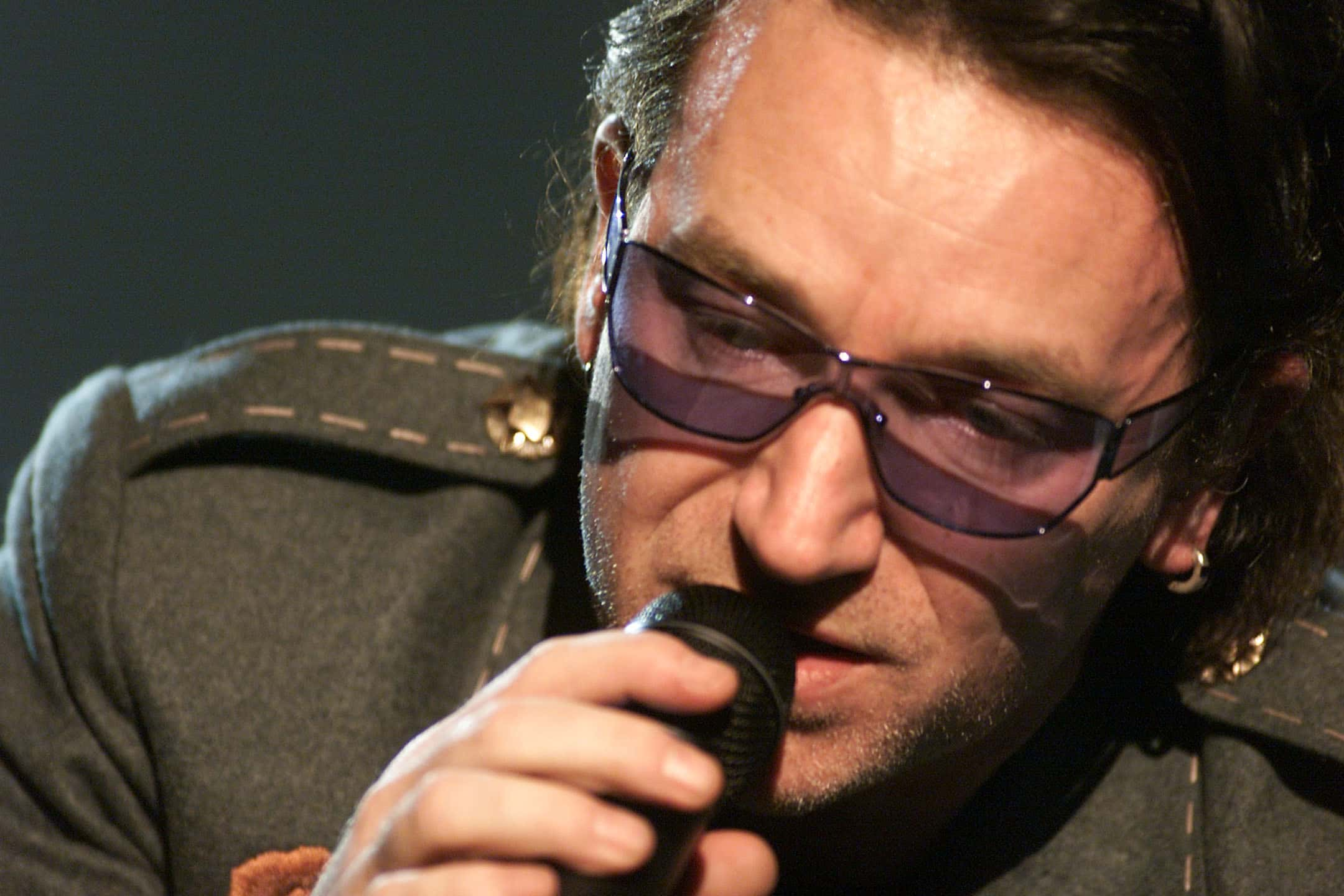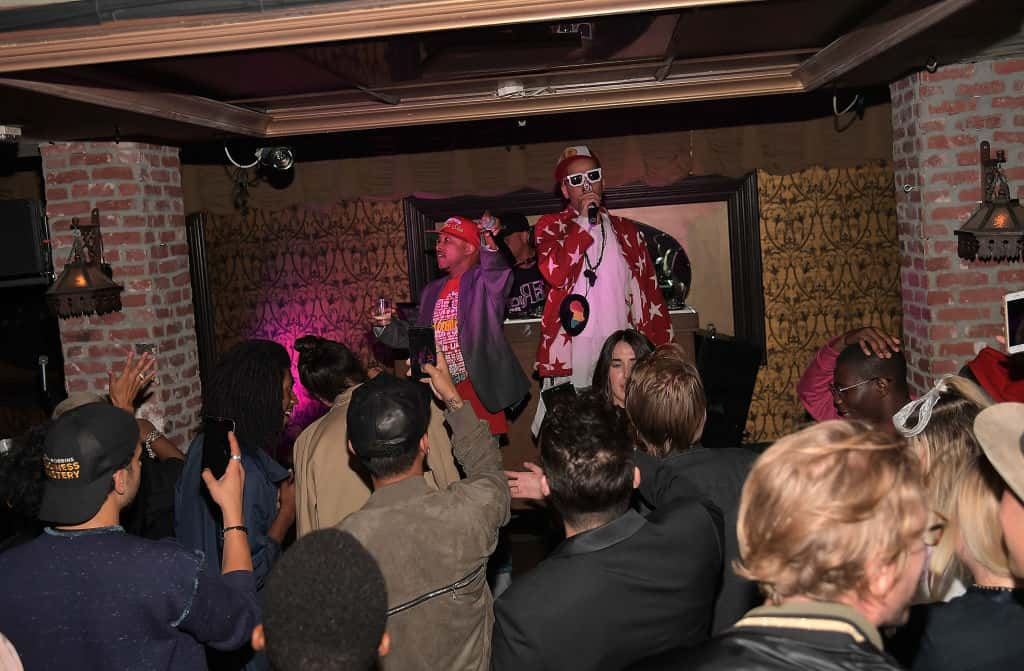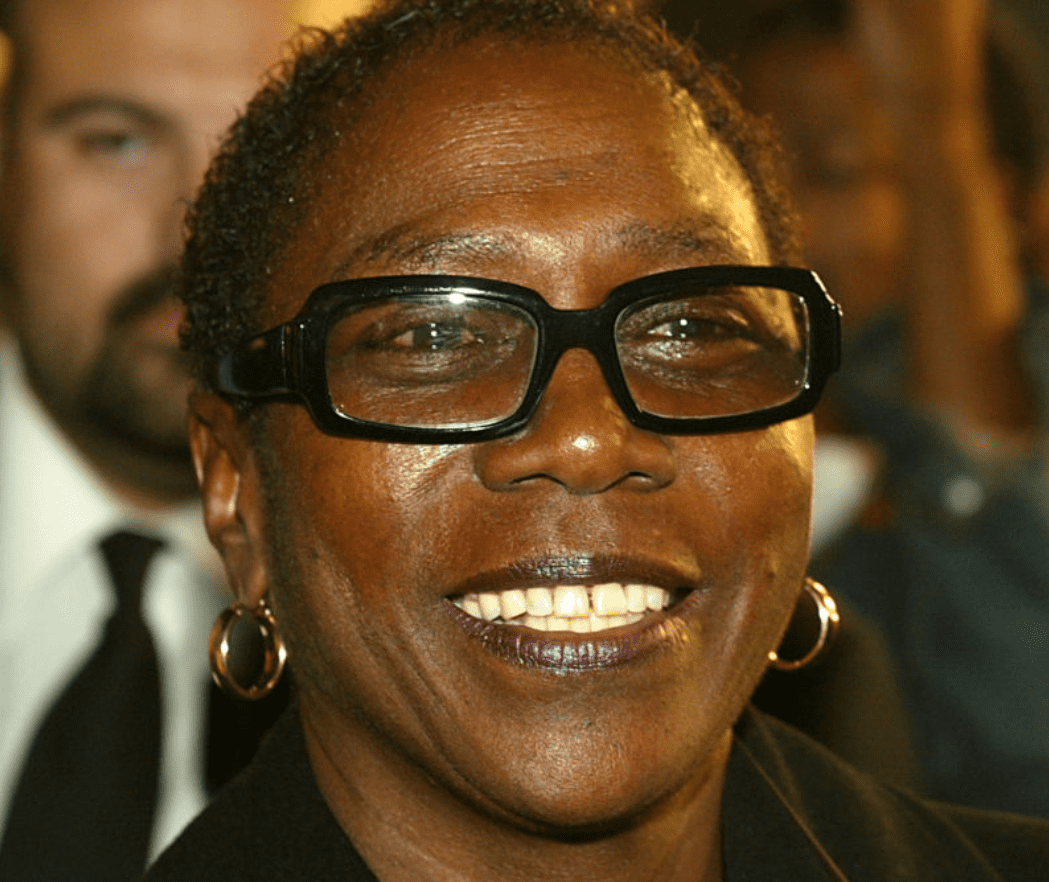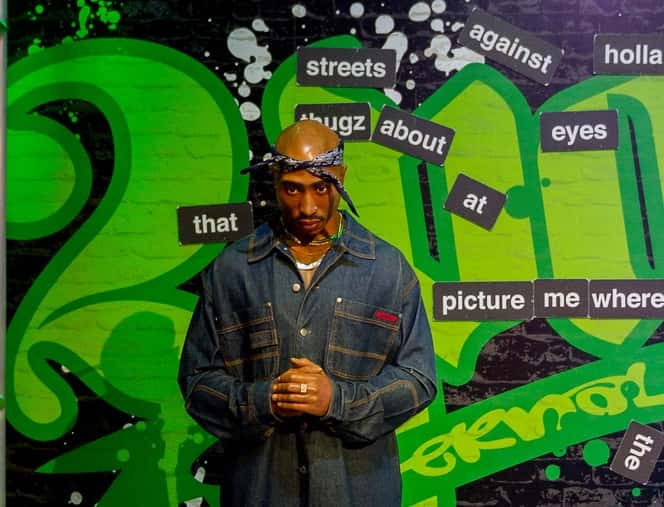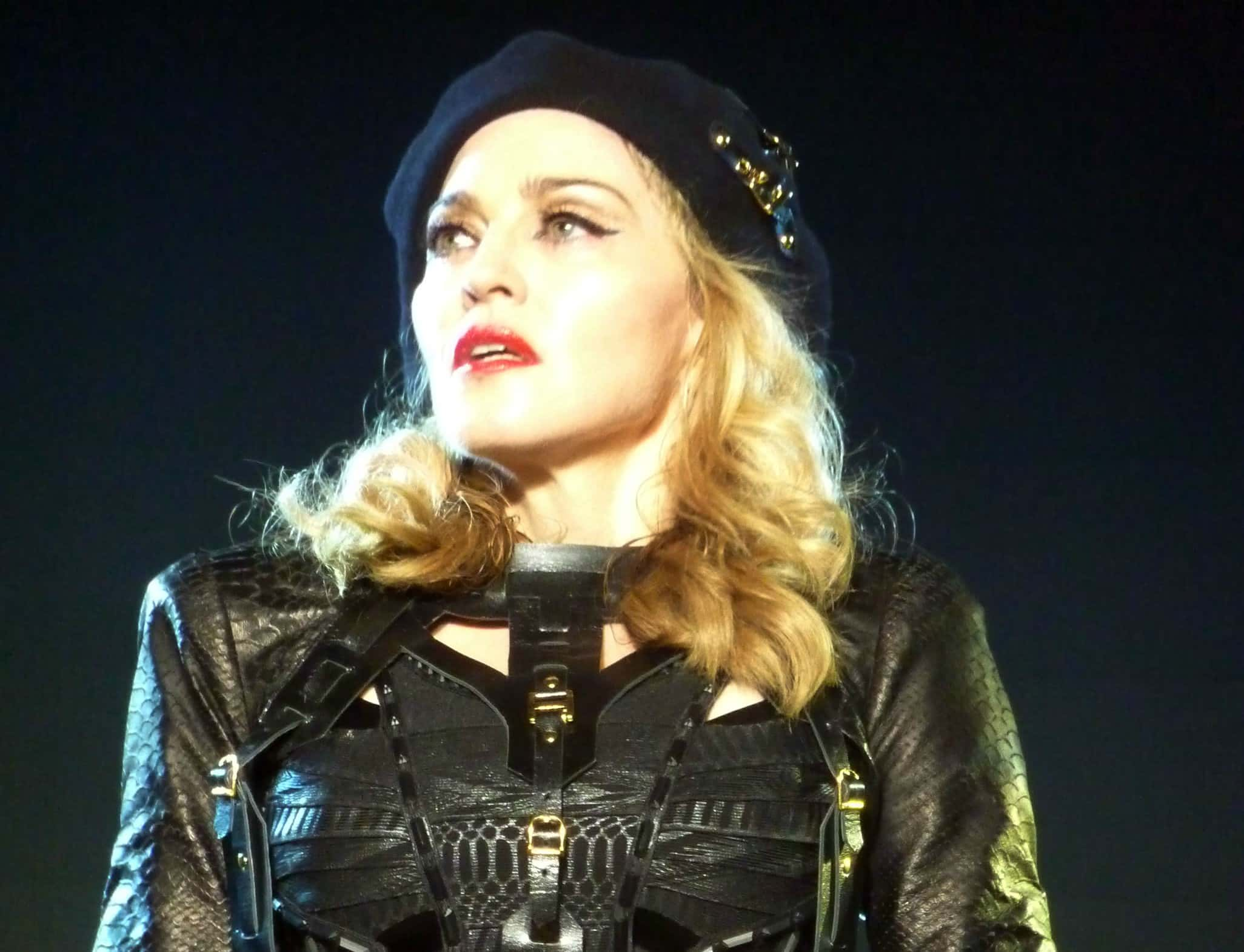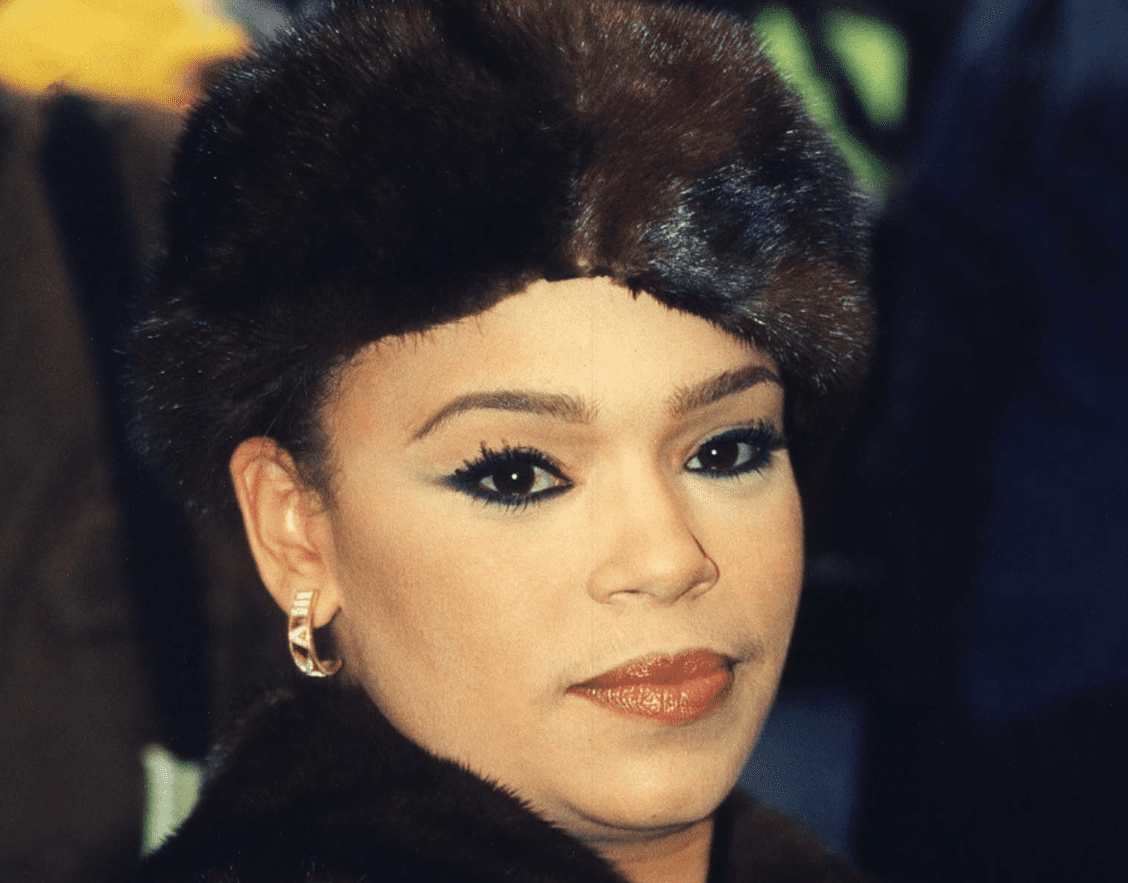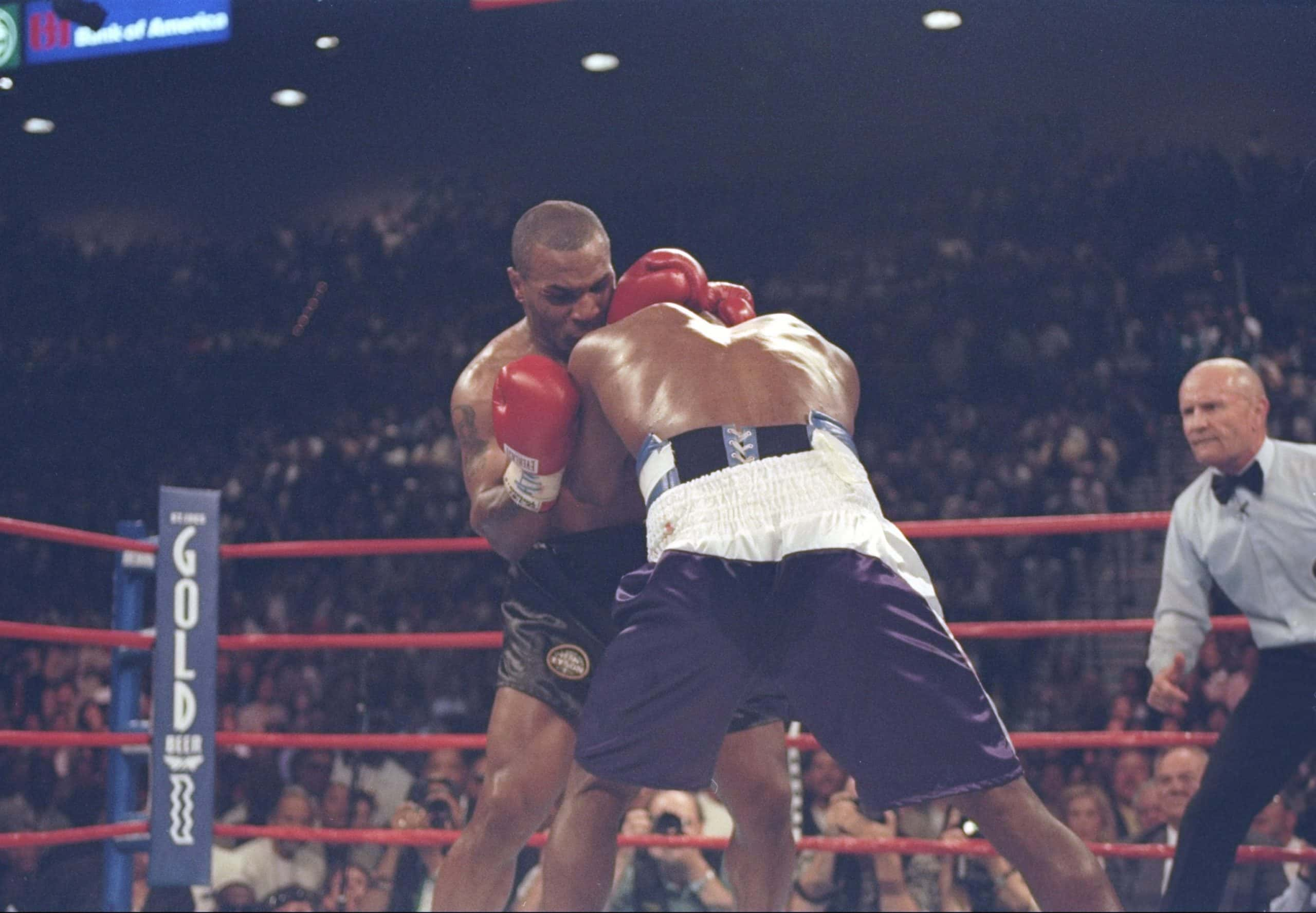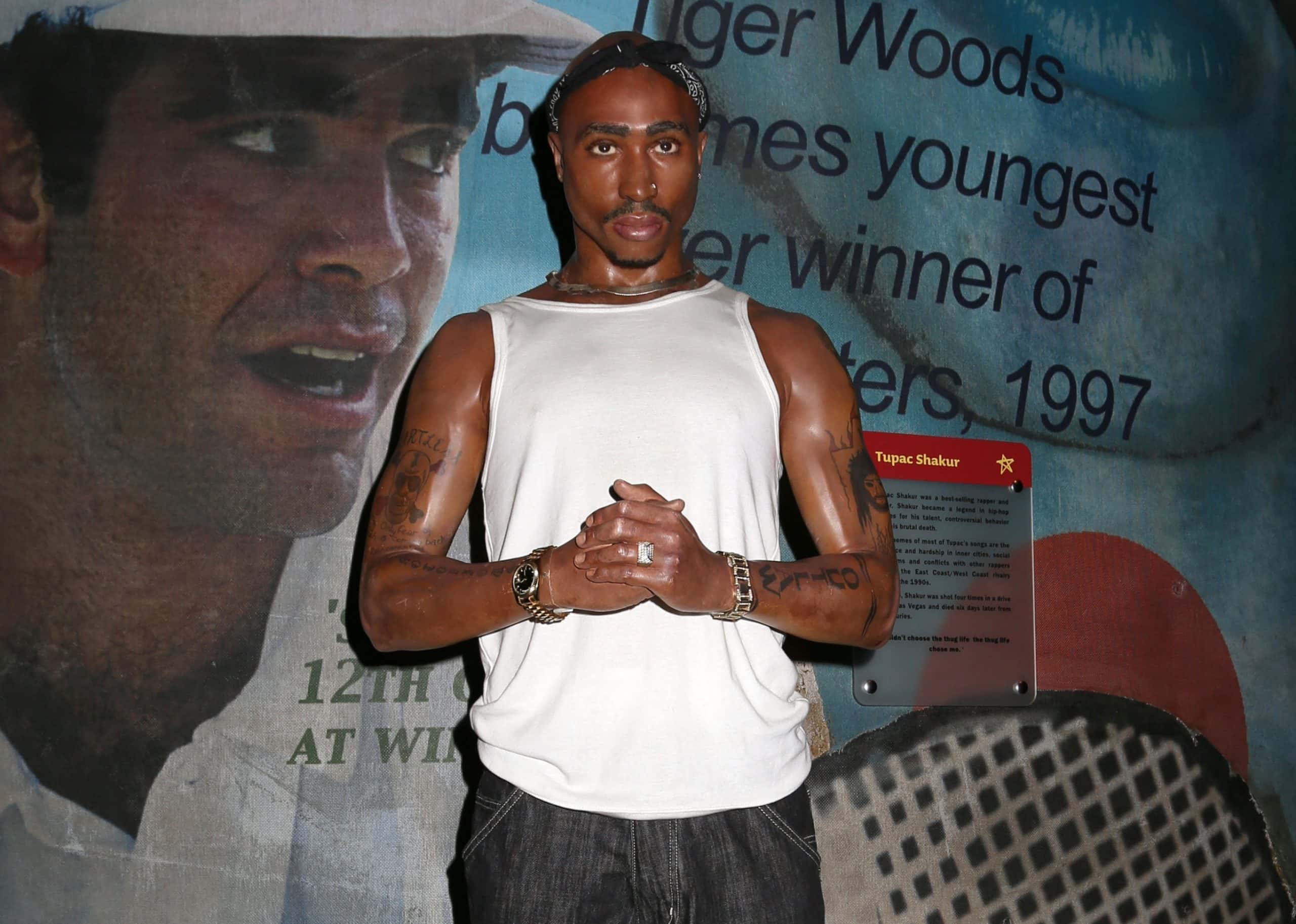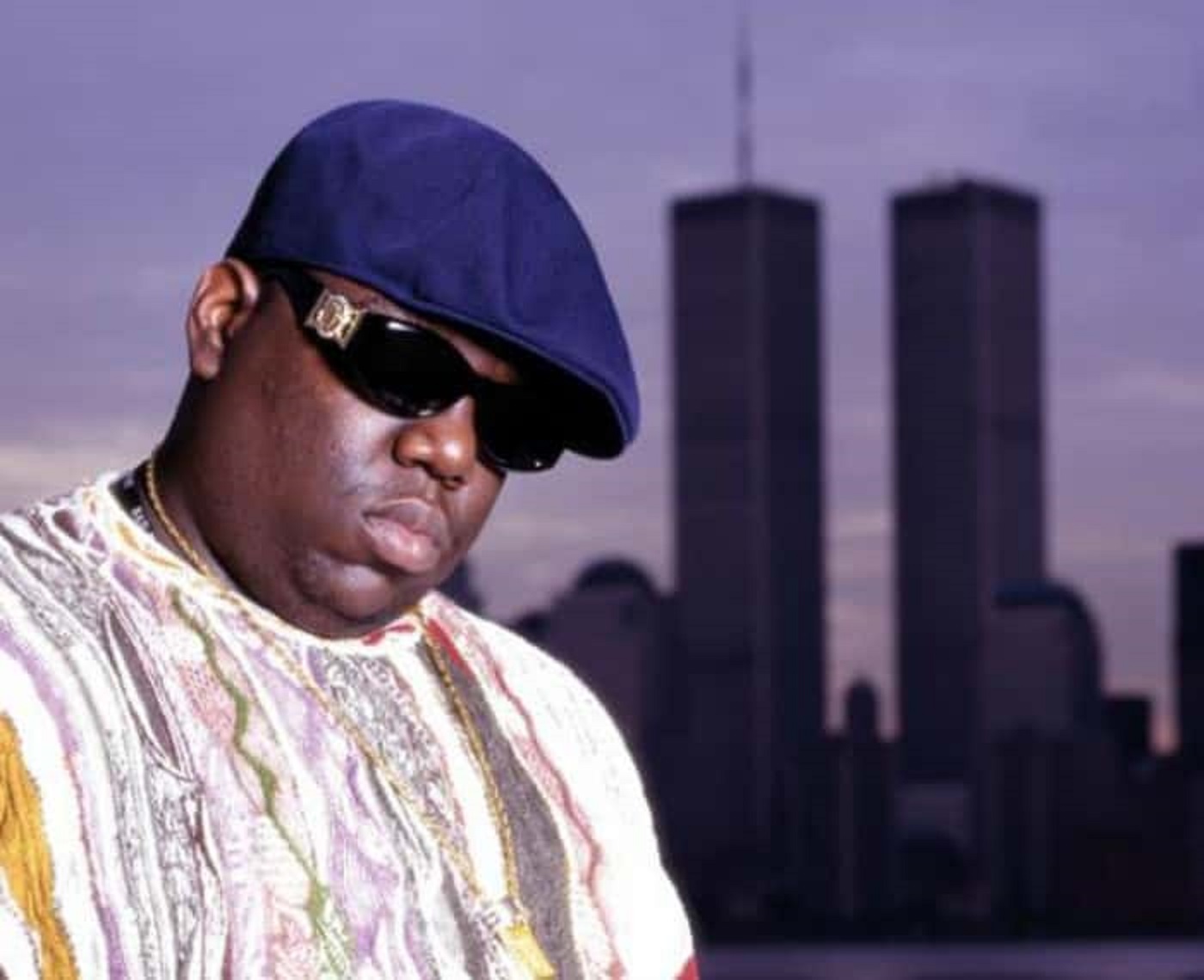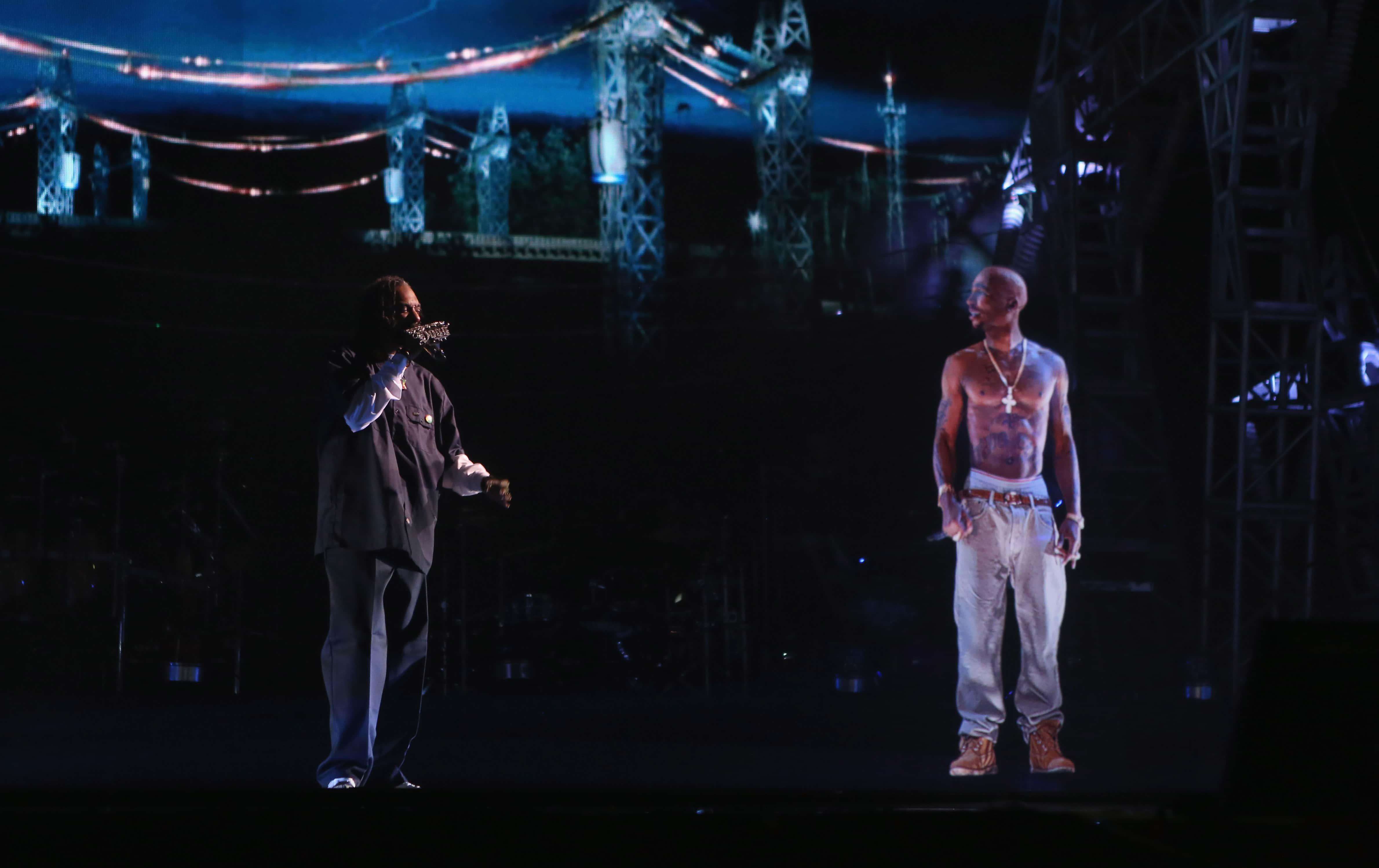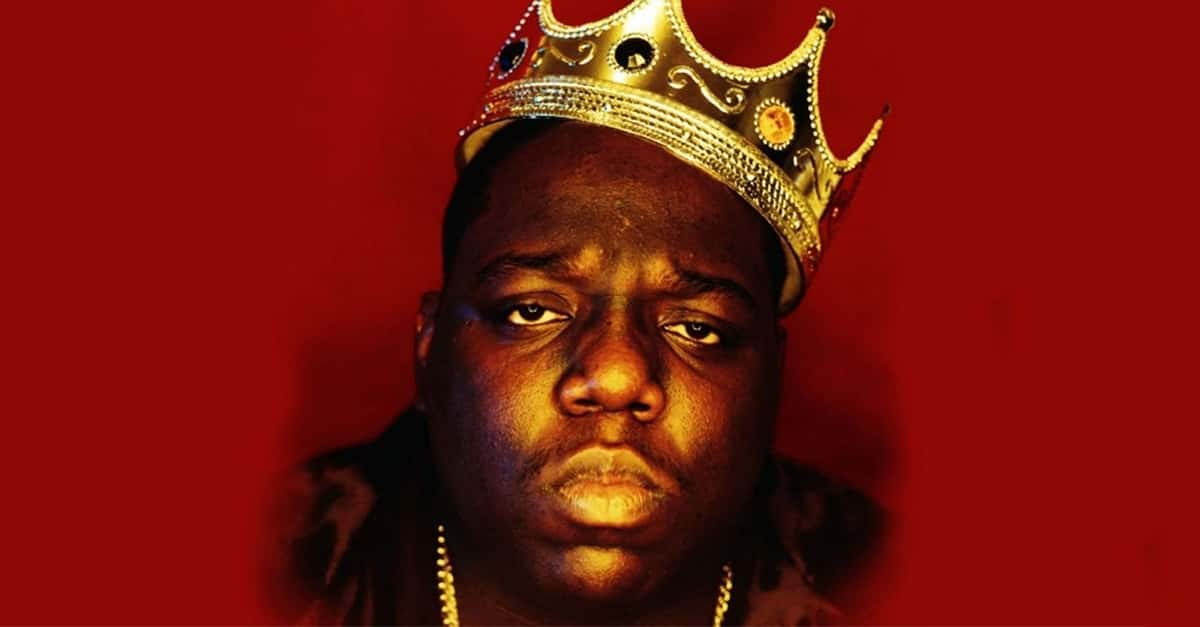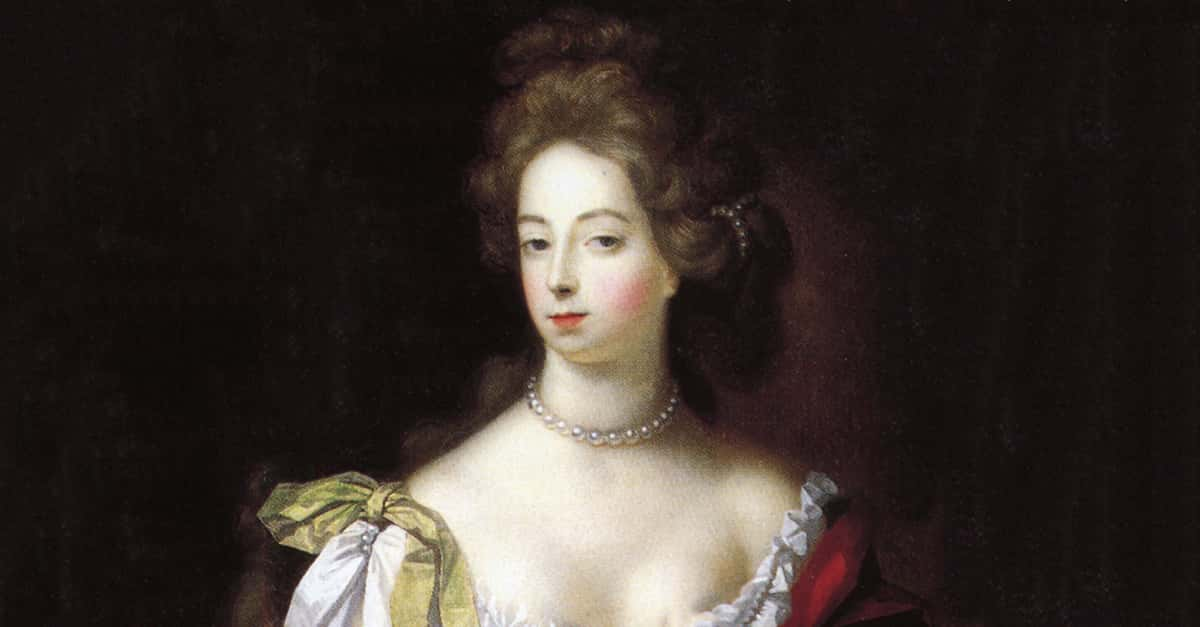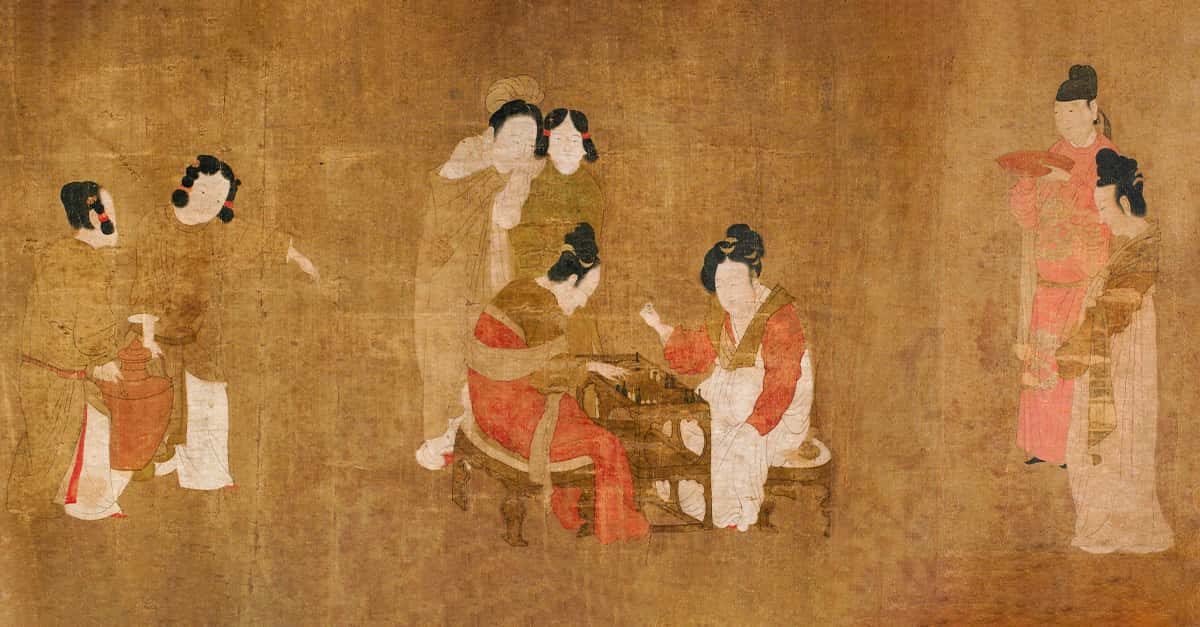"I'm not saying I'm going to rule the world or I'm going to change the world. But I guarantee I will spark the brain that will change the world. That's our job—to spark someone else watching us”.—Tupac Shakur
Tupac Shakur is known today as one of top selling and most influential rappers of all-time, but he came from a hard life. In his music, he often drew upon difficulties he had seen with his own eyes: poverty, drug addiction, violence, and gang culture. Tupac made a career by using art to articulate the racial injustices endured by many African-Americans, making him a spokesperson not only for his generation but for those subsequent who continue to struggle against inequality. In the words of journalist Chuck Phillips, Tupac was “a ghetto poet whose tales of urban alienation captivated young people of all races and backgrounds… [he] helped elevate rap from a crude street fad to a complex art form, setting the stage for the current global hip-hop phenomenon”.
His yet-unsolved murder in 1996 ended the career of one of the first widely popular and socially conscious West Coast rappers—a pioneer who helped shape rap into a respected American art form. Read on for 42 facts about Tupac Shakur’s life, career, and tragic end.
Tupac Facts
1. Birth
Despite being perhaps the most famous member of the West Coast hip-hop scene, Tupac was actually born on the East Coast. He was born on June 16th, 1971 to Afeni Shakur and William Garland in East Harlem, New York City.
 Poetic Justice(1993), Columbia Pictures
Poetic Justice(1993), Columbia Pictures
2. Namesake
At birth, Tupac was named Lesane Parish Crooks. One year after his birth, in 1972, he was was renamed Tupac Amaru Shakur, after Túpac Amaru III, a Peruvian revolutionary from the 18th century who was executed after leading an indigenous uprising against Spanish rule in South America. Tupac was given the surname his mother had herself taken in 1968—“Shakur” is Arabic for “thankful one”.
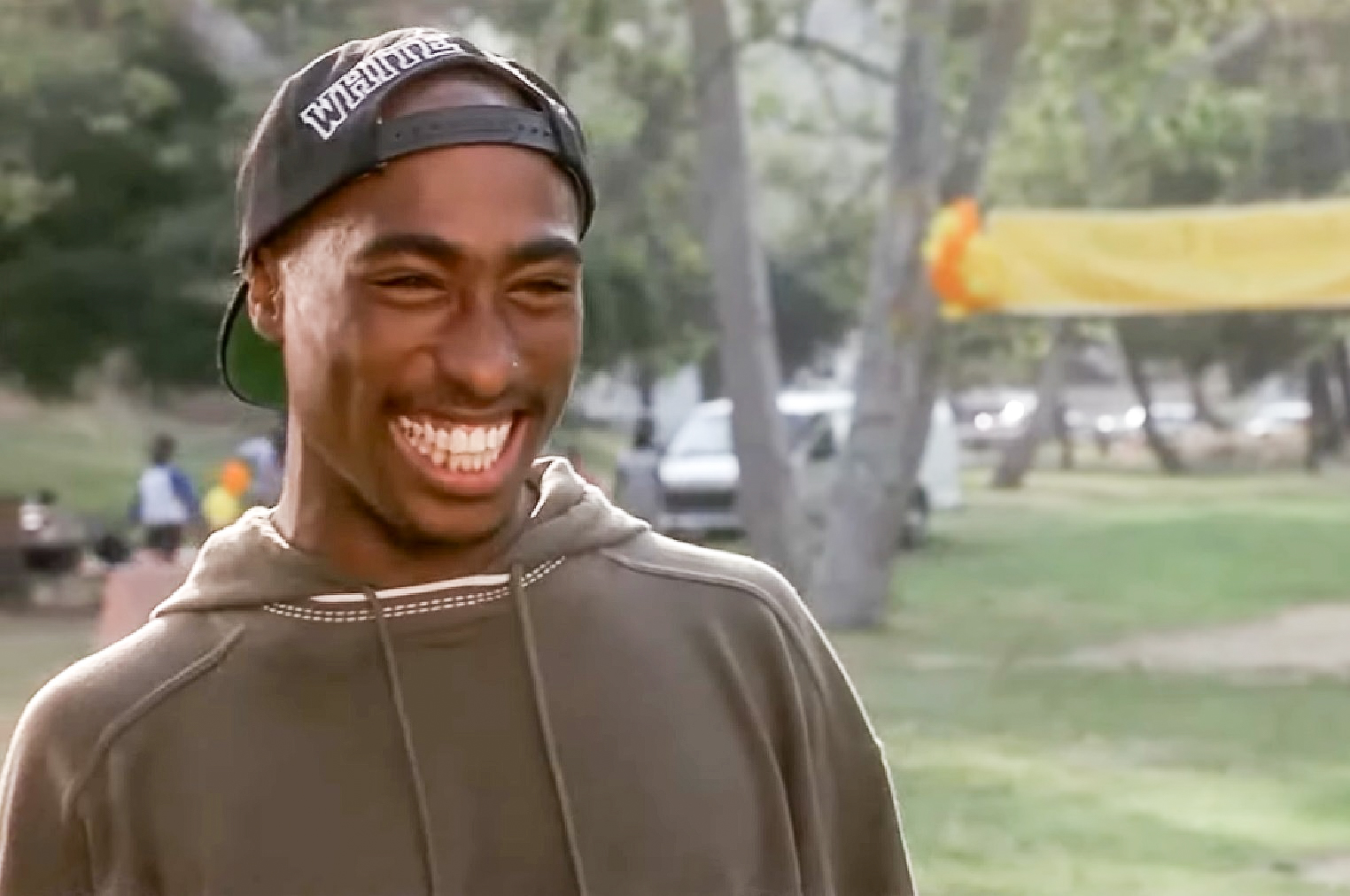 Poetic Justice(1993), Columbia Pictures
Poetic Justice(1993), Columbia Pictures
3. Acquitted
Both of Tupac’s parents were active members of the Black Panther party during the 1960s and 1970s. Just one month before Tupac’s birth, his mother (who had been jailed) was acquitted of conspiracy charges relating to a high-profile trial of Black Panther members. She had been charged with more than 150 counts of “conspiracy against the United States government” in a trial of Black Panther members accused of planning bombings of police stations in New York City.
4. The Godfather
Tupac’s godfather was Elmer “Geronimo” Pratt, a high-ranking member of the Black Panthers. Pratt was convicted of murdering a school teacher during a robbery in 1968, but his conviction was later overturned after he spent 27 years in prison.
5. Criminal Family
Tupac’s later career as a rapper, in which he rapped about crime and the social ills that produce it, was likely influenced by the radical politics he grew up surrounded by, and the actions of his family members. His stepfather, Mutulu Shakur, was on the FBI’s Ten Most Wanted Fugitives list for four years, beginning in 1982. Mutulu was wanted for having helped his friend Assata Shakur (no relation) escape from a penitentiary in New Jersey. She had been imprisoned for the 1973 murder of a police officer.
6. Young Performer
At the age of twelve, Shakur enrolled in Harlem’s 127th Street Repertory Ensemble. He was cast as the Travis Younger in the play A Raisin in the Sun by Lorraine Hansbury, which was performed at the Apollo Theater to raise funds for Jessie Jackson's presidential campaign.
 Poetic Justice(1993), Columbia Pictures
Poetic Justice(1993), Columbia Pictures
7. The Bard
Shakur was a big fan of Shakespeare, and performed in several Shakespeare plays in school.
8. Irish Influence
Tupac wasn’t just a fan of English literature—he also listened to many English and Irish musicians such as Kate Bush, Culture Club, Sinéad O’Connor and U2.
9. Winning Personality
Tupac stood out as a high school student—he was considered the best rapper in his school, where he won rap competitions. His sense of humor, exceptional rapping skills, and ability to get along with all types of people made him one of the most popular teenagers at his school.
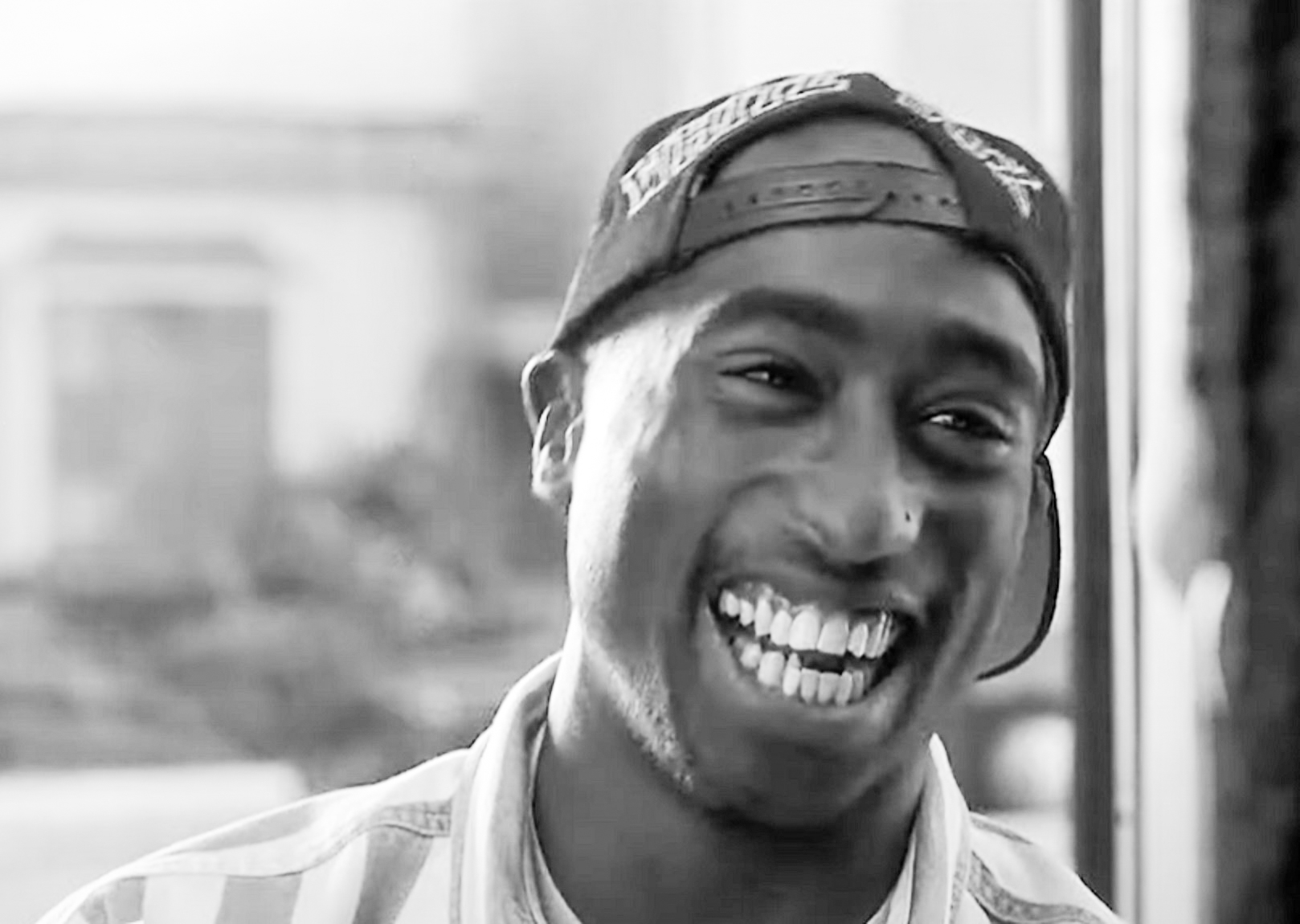 Poetic Justice(1993), Columbia Pictures
Poetic Justice(1993), Columbia Pictures

Sign up to our newsletter.
History’s most fascinating stories and darkest secrets, delivered to your inbox daily. Making distraction rewarding since 2017.
10. Platonic Friendship
While living in Harlem, Tupac developed a close friendship with a young Jada Pinkett, one that would continue until his death. She later became Jada Pinkett Smith after marrying fellow rapper and actor Will Smith.
11. From East Coast to West Coast
In 1988, after moving with his family to Marin City, California (a suburb of San Francisco), Shakur began taking poetry classes with Leila Steinberg. She helped organize a concert in 1989 with Shakur’s first group, Strictly Dope.
12. Early Influence
Because of Steinberg and the concert she organized, Tupac was noticed and signed with Atron Gregory. He got his first real gig in the entertainment biz in 1990, as roadie and backup dancer for the group Digital Underground.
13. You Sure He’s West Coast?
It’s ironic, given his eventual West Coast affiliations, but while living in Baltimore, Tupac began his rap career calling himself MC New York. His first taste of fame came in early 1991 with a cameo on “Same Song” by Digital Underground, which was featured in the soundtrack to the film Nothing But Trouble (1991), in which Tupac also had a brief cameo with the group.
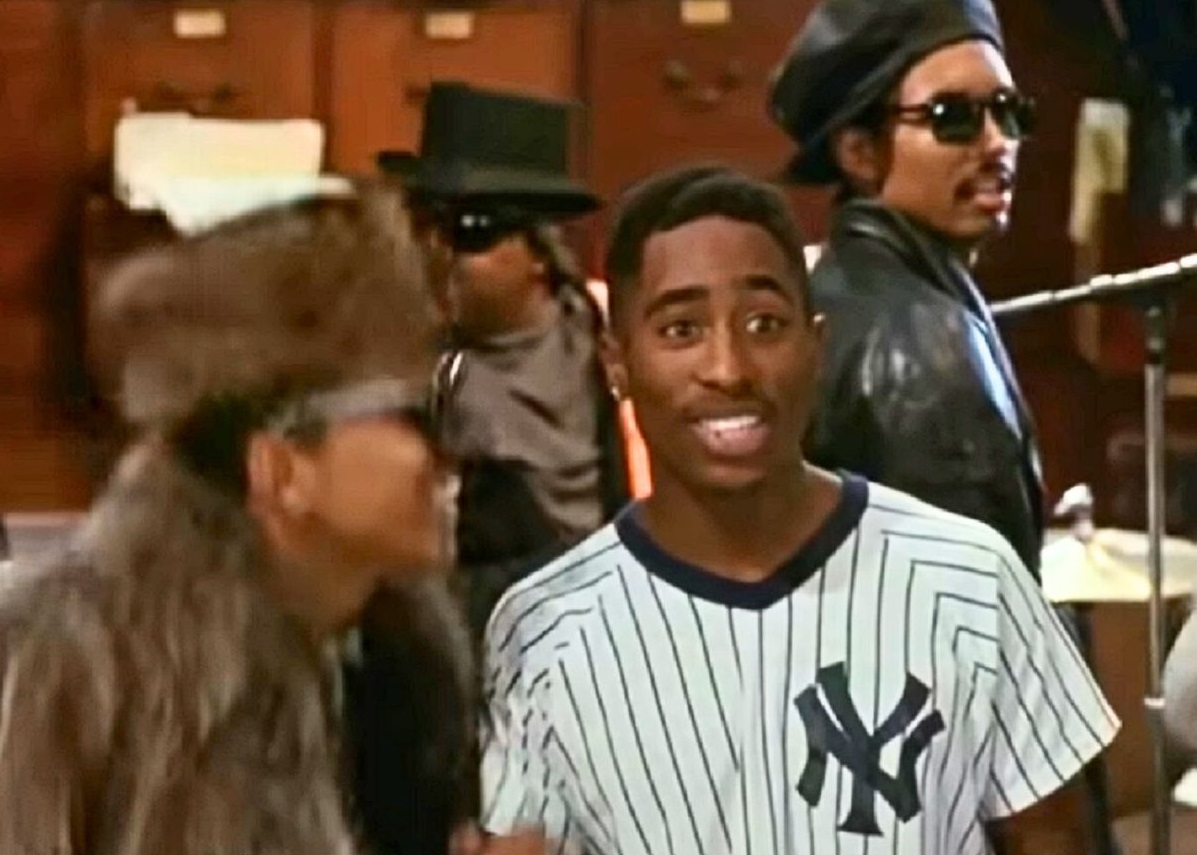 Nothing But Trouble (1991),Warner Bros
Nothing But Trouble (1991),Warner Bros
14. First Success
In November 1991, Tupac released his debut solo album, titled 2Pacalypse Now. The album was strongly critical of unjust social policies. Though not a commercial success, the album was highly influential—Nas, Eminem, The Game, and Talib Kweli all cite this album as an inspiration.
15. Early Controversy
Not everyone was a fan of 2Pacalypse Now. Vice President Dan Quayle openly criticized the album and its themes of police brutality after it was cited by an attorney defending a client charged with shooting a state trooper. Of the album, Quayle said, "There's no reason for a record like this to be released. It has no place in our society".
16. Sophomore Album
Strictly 4 My N.I.G.G.A.Z., released in February 1993, was Tupac’s second album. It was more commercially successful than his debut, charting at #24 on the Billboard 200. It’s considered his “breakout” album, and two of its singles (“Keep Ya Head Up” and “I Get Around”) reached platinum status.
 Poetic Justice(1993), Columbia Pictures
Poetic Justice(1993), Columbia Pictures
17. Joshua’s Dream
In 1993, Tupac received a letter from the parents of a dying boy named Joshua, whose dying wish was to meet Tupac. Shakur flew to Maryland to meet the boy and take him to a basketball game. After the boy’s death, Tupac renamed his publishing company from Ghetto Gospel Music to Joshua’s Dream in tribute to the young fan.
 Poetic Justice(1993), Columbia Pictures
Poetic Justice(1993), Columbia Pictures
18. Thug Life
Shakur formed the group Thug Life in 1993 and released a gold-selling album titled Thug Life: Volume 1 in 1994. It was the group’s only album—there was never to be a Volume II, and the group usually performed live without him. However, Tupac did get his infamous “Thug Life” tattoo inked across his stomach as a result.
 Poetic Justice(1993), Columbia Pictures
Poetic Justice(1993), Columbia Pictures
19. Legal Trouble
Tupac was convicted of sexual assault in 1995 and sentenced to Clinton Correctional Facility, getting released after 9 months. At the time, he did not have the $1.4 million to secure bail and was given the money by Suge Knight. In exchange, Tupac signed a three-record deal with Knight’s Death Row Records. Shakur ended up serving an additional 120 days for violating the terms of his bail, but insisted on his innocence in an appearance on The Arsenio Hall Show.
 The Arsenio Hall Show,CBS Television Distribution
The Arsenio Hall Show,CBS Television Distribution
20. Collateral Damage
On November 30th, 1994, the day before his sexual abuse trial reached a verdict, Tupac was robbed and shot five times by men in the lobby of his recording studio. His jewelry was stolen, but his Rolex watch was not, leading him to suspect the robbery was just a cover for the plan to shoot him. The next day, Shakur checked out of the hospital three hours after surgery, against doctor’s orders. The day after, he arrived at the courthouse in a wheelchair to hear the verdict against him.
 Poetic Justice(1993), Columbia Pictures
Poetic Justice(1993), Columbia Pictures
21. Tupac Against The World
In October 1995, Tupac released his third solo album, Me Against The World. The album was a huge success and it won Best Rap Album at the 1996 Soul Train Awards. Me Against
 Poetic Justice(1993), Columbia Pictures
Poetic Justice(1993), Columbia Pictures
22. Preserved For Posterity
The track “Dear Mama,” off Me Against The World, was preserved in the Library of Congress as a work that is "culturally, historically, or aesthetically important, and/or inform or reflect life in the United States”. The track is a tribute to his mother, Afeni Shakur, which details his life in poverty and his mother’s addiction to crack cocaine, but nonetheless conveys a deep love and respect for his mother and his upbringing. A press release drafted by the Library of Congress called the song "a moving and eloquent homage to both the murdered rapper's own mother and all mothers struggling to maintain a family in the face of addiction, poverty and societal indifference".
23. Style Icon
Tupac’s signature bandana, tied into rabbit ears, has been called “one of hip-hop’s most recognizable style choices” by Complex.
24. Tupac The Actor
Tupac’s bread and butter came from his rap career, but he never lost the acting bug he had caught in his teens. After his cameo in Nothing But Trouble (1991) with Digital Underground, he also starred in Juice (1992), for which he was praised by Rolling Stone. He then co-starred opposite Janet Jackson in Poetic Justice (1993) and acted in basketball drama Above The Rim (1994).
 Poetic Justice(1993), Columbia Pictures
Poetic Justice(1993), Columbia Pictures
25. Famous Friends
In addition to his close friendship with actress Jada Pinkett, Tupac was friends with fellow rapper Chuck D. , boxer Mike Tyson, and actors Marlon Wayans and Jim Carrey (both of whom were acting on sketch comedy show In Living Color at the time). Also, though it was kept under wraps for years, Tupac dated Madonna for a time.
26. Self-Incriminating
In 1994, Shakur was found guilty of assaulting Allen Hughes, co-director of Menace II Society, a film in which Shakur was to have a role. Shakur had later boasted of the assault in an appearance on Yo! MTV Raps—the line that he had “beat up the director of Menace II Society” would later be used against him in court.
27. Hitmaker
All Eyez On Me (1995) was Tupac’s fourth album, and the final album released during his lifetime. Released on Death Row Records and Interscope, the album contains a remix of his hit single, “California Love”. The album was a hit—by April 1996 it had gone five times platinum (and would reach nine times platinum by 1998).
 Poetic Justice(1993), Columbia Pictures
Poetic Justice(1993), Columbia Pictures
28. A Brutal Diss
1996 also saw the release of the diss track “Hit ‘Em Up,” in which Tupac raps trash talk about Bad Boy Records, Puff Daddy, and especially his one time friend the Notorious B.I. G., even claiming to have slept with Biggie’s wife, Faith Evans.
29. Name Change
While in prison, Tupac read about philosophy and warfare, and was heavily influenced by The Art of War by Sun Tzu, and The Prince by Niccolo Machiavelli, both of whom suggested that a leader should eliminate his enemies by any means necessary. Shakur adopted the stage name Makaveli for the release of his final album, called The Don Killuminati: The 7 Day Theory (1996). The album was entirely written and produced in just seven days (three days on lyrics, four on production), but it would not be released until after Tupac’s death.
 Poetic Justice(1993), Columbia Pictures
Poetic Justice(1993), Columbia Pictures
30. Fateful Night
On September 7th, 1996, Tupac was involved in a brawl with members of the Crips while in Las Vegas. Shakur was there to attend a boxing match between Bruce Seldon and Shakur’s friend Mike Tyson at the MGM Grand, in the company of Death Row Records owner Suge Knight, who was closely affiliated with the Bloods. Several Crips were spotted in the lobby of the hotel and a large fight ensued.
31. Gunned Down
After the boxing match, Knight and Shakur were on their way to the Death Row-owned Club 662. The pair were stopped at a traffic light, chatting to women in an adjacent car, when another car pulled up carrying a gunman who fired on Shakur. Tupac was hit four times—twice in the chest, once in the arm, and once in the thigh.
 Poetic Justice(1993), Columbia Pictures
Poetic Justice(1993), Columbia Pictures
32. Last Words
According to Las Vegas police officer Chris Carroll, the first on the scene, Tupac’s last words were “f*** you,” after which he refused to speak to any other police officer. Later, in the hospital, Shakur was informed that someone had called his record company and made death threats against him. The receptionist had informed Las Vegas police, who declined to investigate, saying they were too understaffed to do anything.
 Poetic Justice(1993), Columbia Pictures
Poetic Justice(1993), Columbia Pictures
33. The End
While in hospital, Tupac suffered greatly from the gunshot wounds he had sustained. He managed to regain consciousness seven times before succumbing to his wounds, after which his mother Afeni Shakur chose to stop life support. He died on September 13th, 1996 of internal bleeding while in the intensive care unit at Las Vegas’ Bellevue Hospital.
 Poetic Justice(1993), Columbia Pictures
Poetic Justice(1993), Columbia Pictures
34. Smoked
Shakur was cremated the day after he died. Reportedly, some of his ashes were mixed with marijuana and smoked by members of his posse, the Outlaw Immortalz.
35. Posthumously Prolific
After Tupac’s death, several solo albums of previously recorded material were released, including The 7 Day Theory, released two months after his death. Shakur’s mother Afeni owned the rights to his music, under the record label Amaru Entertainment. Afeni launched Makaveli Branded Clothing in 2003, and three films featuring Tupac were released after his death—Bullet (1996), Gridlock’d (1997) and Gang Related (1997). He was supposed to star in the film Baby Boy (released in 2001), and as an homage, the film features a mural of Shakur and his song, “Hail Mary”.
 Flickr, University of Central Arkansas
Flickr, University of Central Arkansas
36. Super Star
Shakur has sold over 75 million records worldwide, with the bulk of that coming after his death; seven of his 11 platinum albums were released posthumously. More music has been released since Tupac's death than when he was alive. According to Forbes, his estate made $15 million in 2008—they included him on their list of "Top-Earning Dead Celebrities".
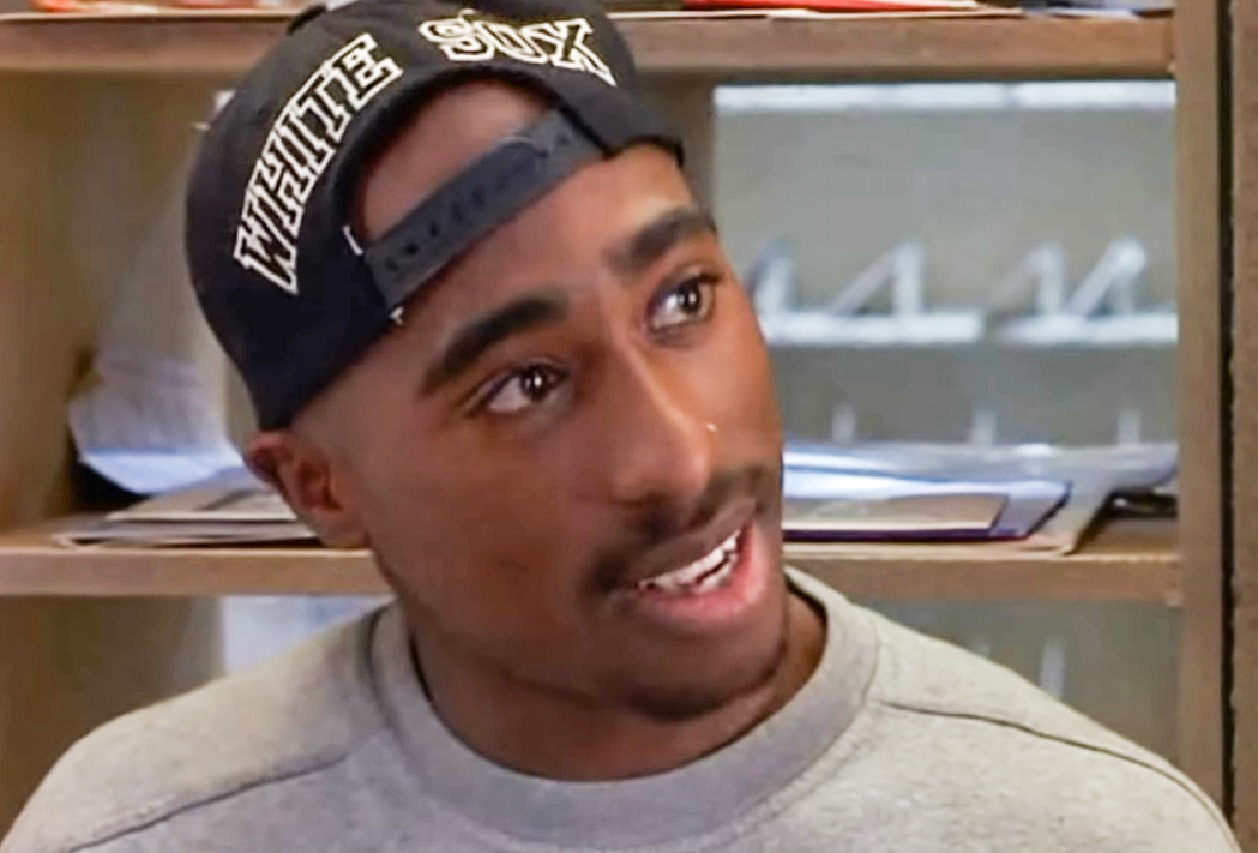 Poetic Justice(1993), Columbia Pictures
Poetic Justice(1993), Columbia Pictures
37. Rapper and Poet
A book of poems titled The Rose That Grew from Concrete was released in 1996, anthologizing poems written by Shakur between 1989-1996. Two poems dedicated to Jada Pinkett were included, one called “Jada” and the other called “The Tears in Cupid’s Eyes”.
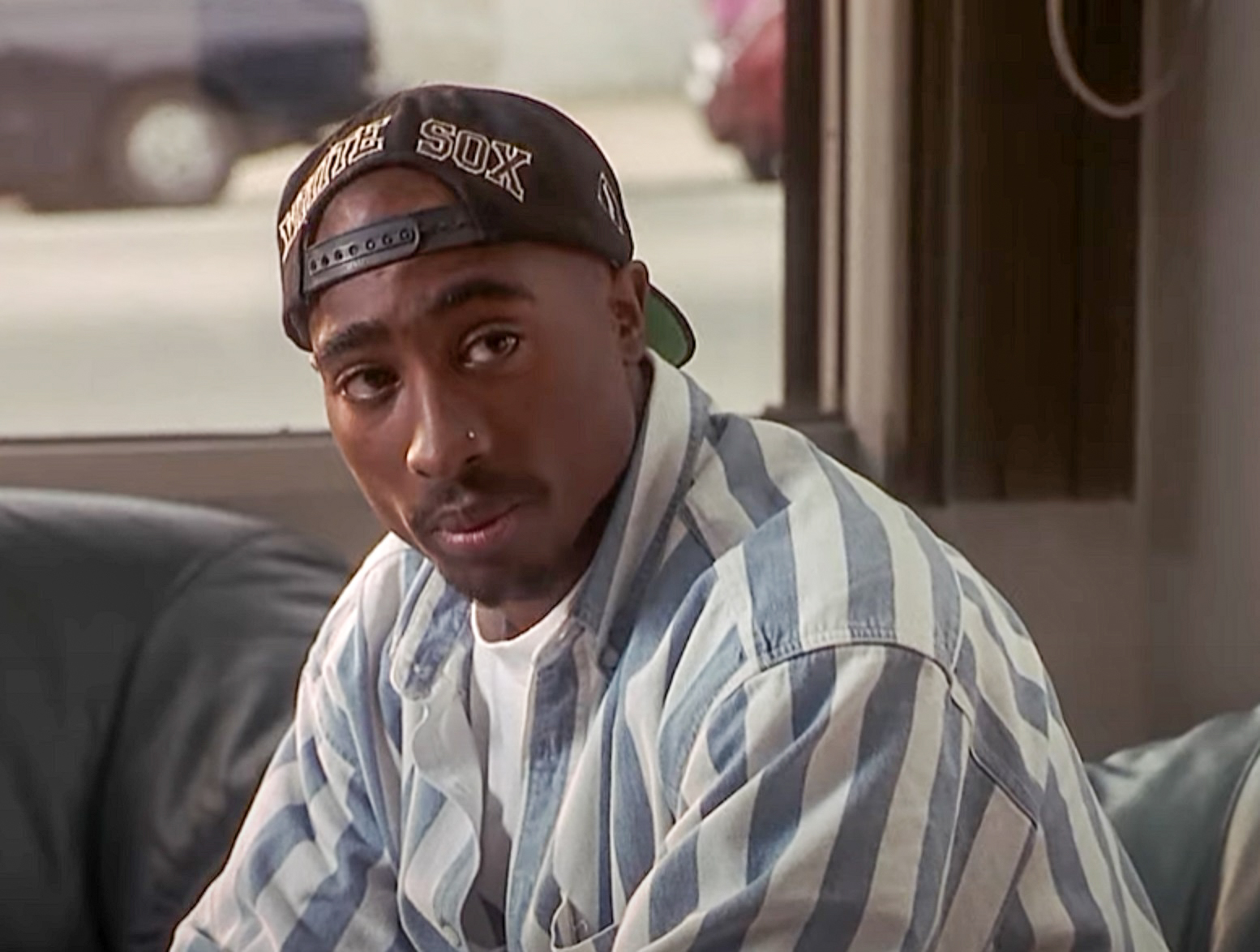 Poetic Justice(1993), Columbia Pictures
Poetic Justice(1993), Columbia Pictures
38. Immortalized
In 2006, technicians at Madame Tussaud’s wax museum debuted an incredibly lifelike wax figure of Tupac. The creators pored over hours of footage of his live performances, and any other video they could find, as well as photos provided by his mother and his personal measurements. The wax figure’s “skin” bore hand-painted renderings of the singer’s notorious tattoos.
39. Conspiracy Theories
In a 2017 interview, Suge Knight hinted that Tupac may still be alive, saying "When I left that hospital me and 'Pac was laughing and joking. I don't see how someone can go from doing well to doing bad," said Knight, adding that “with Pac you never know”. There have been several reported “sightings” of Tupac after his death—including one by Kim Kardashian. We’re not sure why Tupac would want to forsake a life of stardom to work security in an airport though…
 Wikimedia Commons, Nick Leisure
Wikimedia Commons, Nick Leisure
40. What Really Happened?
In 2002, Los Angeles Times reporter Chuck Phillips wrote a two-part exhaustively-researched investigative piece titled “Who Killed Tupac Shakur”? In the piece, Phillips suggests the killing was retribution for Tupac having beat up several Crips gang members in the brawl earlier that night.
 Poetic Justice(1993), Columbia Pictures
Poetic Justice(1993), Columbia Pictures
41. Biggie Connection
East Coast rapper Notorious B.I.G., with whom Tupac and Death Row Records had a well-known rivalry, always denied any involvement in Shakur’s murder. He released invoices and other documents suggesting that he had been in New York City recording an album the night it happened. In his piece, Phillips stated that Biggie's evidence was inconclusive, but did not implicate him in the killing.
42. Back From The Dead
Fans at the Coachella Music Festival in April 2012 were astounded to see Tupac perform live on stage in front of their very eyes, despite it being 16 years after the rapper’s death. A hologram (or, more accurately, a 2-D video projection) of Shakur was projected on stage where “he” performed “Hail Mary” and rapped “2 of Amerikaz Most Wanted” with Snoop Dogg (who performed live). The image was the creation of VFX company Digital Domain. Video footage used in the recreation was taken from the public domain, and the projection was achieved using an illusion technique known as “Pepper’s ghost”.
Sources: 1, 2, 3, 4, 5, 6, 7, 8, 9, 10, 11, 12, 13, 14, 15, 16, 17


